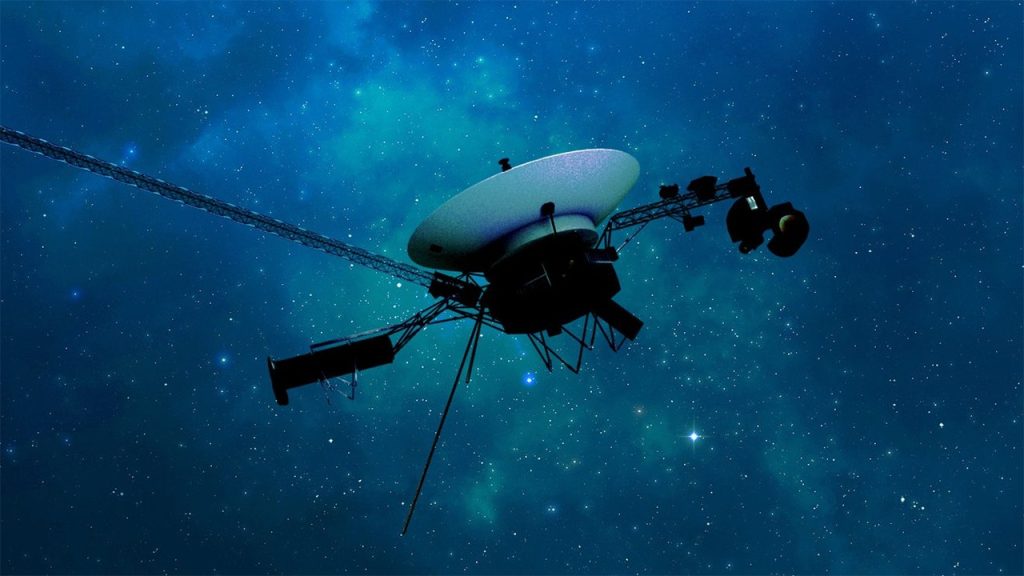NASA has successfully reactivated roll thrusters on the Voyager 1 spacecraft, which had been inactive for nearly two decades. This significant development comes from scientists at the Jet Propulsion Laboratory (JPL) in Southern California, as they prepare for potential challenges ahead. The revival of these thrusters is crucial, particularly because Voyager’s main thrusters face a risk of clogging, which could threaten ongoing communication with Earth as early as Fall 2025.
However, due to essential upgrades on the Deep Space Station 43 antenna in Australia, communication with both Voyager spacecraft will be offline until 2026. Amidst these adjustments, key JPL personnel underscore their importance for future lunar missions and the continuation of Voyager’s legacy in space exploration.
| Article Subheadings |
|---|
| 1) Revival of Roll Thrusters |
| 2) Importance of Ongoing Communication |
| 3) The Role of Voyager in Future Missions |
| 4) Deep Space Station 43 and Its Upgrades |
| 5) Voyager’s Historical Contributions |
Revival of Roll Thrusters
NASA recently announced that the roll thrusters on Voyager 1, which had been inactive since 2004, have been successfully reactivated. This achievement is attributed to the dedicated efforts of scientists at the Jet Propulsion Laboratory. The revival of these thrusters is particularly significant as the main thrusters face potential clogs due to residual buildup, which could pose serious operational challenges in the near future. Scientists speculate that the main thrusters may begin to fail as soon as Fall 2025, making the functionality of the roll thrusters critical in ensuring continued maneuverability of the spacecraft.
Importance of Ongoing Communication
The ability to maintain communication with Voyager 1 is crucial for ongoing scientific research and data collection. The roll thrusters play a vital role in adjusting the spacecraft’s position to ensure its antenna remains aligned with Earth. Without this alignment, the risk of losing contact with the spacecraft increases significantly. NASA officials emphasize that a break in communication, especially at this advanced stage of the mission, could make it nearly impossible to restore contact with Voyager 1, further stressing the importance of these recovered thrusters.
The Role of Voyager in Future Missions
The recent developments involving Voyager 1 directly connect to NASA’s broader goals regarding future missions to the Moon and beyond. Suzanne Dodd, the Voyager project manager, underscored this connection, suggesting that the successful upgrades to the communications infrastructure are critical for upcoming lunar exploration initiatives. These upgrades improve the communications capacity, allowing for better collaboration and data exchange between spacecraft operating beyond Earth’s orbit, particularly those inspired by the pioneering discoveries made by Voyager.
Deep Space Station 43 and Its Upgrades
Adding to the complexities of maintaining contact with Voyager 1, the Deep Space Station 43 antenna located in Australia will undergo significant upgrades until February 2026. This 230-foot-wide antenna is crucial for sending commands and receiving data from both Voyager probes. During this period, the inability to contact Voyager 1 and Voyager 2 raises concerns about data collection from ongoing scientific operations. The upgrades being implemented are designed to enhance the facility’s capabilities, ensuring it can handle future missions more effectively.
Voyager’s Historical Contributions
Voyager 1, which was launched in 1977, has made transformative contributions to our understanding of the solar system and interstellar space. Its notable achievements include the discovery of previously unknown moons and rings around Jupiter and Saturn, as well as providing valuable data about the characteristics and composition of these celestial bodies. As the first human-made object to leave the solar system, Voyager 1 continues to be an invaluable asset to scientific inquiry, with each transmission providing insights that build upon previous findings.
| No. | Key Points |
|---|---|
| 1 | NASA successfully reactivated roll thrusters on Voyager 1 after nearly two decades. |
| 2 | Ongoing communication with Voyager 1 is critically important for the spacecraft’s operation. |
| 3 | Voyager’s upgrades are also aimed at supporting future lunar missions and enhancing deep space communications. |
| 4 | Deep Space Station 43 will be offline until 2026 for essential upgrades. |
| 5 | Voyager 1 has made significant contributions to our understanding of the solar system. |
Summary
The revival of Voyager 1’s roll thrusters marks a pivotal moment in the ongoing mission of this historic spacecraft. As NASA faces impending challenges related to communication and maneuverability, the successful upgrades represent a commitment to not only preserving the legacy of Voyager but also preparing for future space exploration endeavors. The upcoming upgrade to the Deep Space Station 43 antenna poses additional concerns for communication continuity, underscoring the intricate planning required for such long-term missions. Ongoing developments in the field set a crucial foundation for advancing human understanding of the universe.
Frequently Asked Questions
Question: Why is the reactivation of the roll thrusters significant?
Reactivating the roll thrusters is vital as it enhances the maneuverability of Voyager 1, allowing it to maintain alignment with Earth for proper communication. This is critical given the potential risks posed by the main thrusters, which may fail in the near future due to residue buildup.
Question: What are the implications of the Deep Space Station 43 upgrades?
The upgrades to Deep Space Station 43 will temporarily hinder communication with both Voyager probes, which could stall critical data collection from ongoing scientific operations. However, these enhancements are expected to improve the facility’s capabilities for future missions.
Question: How has Voyager 1 contributed to our understanding of space?
Voyager 1 has made groundbreaking discoveries, including previously unknown moons and rings around gas giants like Jupiter and Saturn. Its extensive data collection continues to influence scientific research and our understanding of the characteristics of celestial bodies in our solar system.


